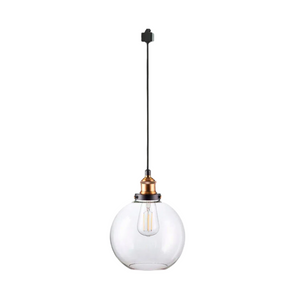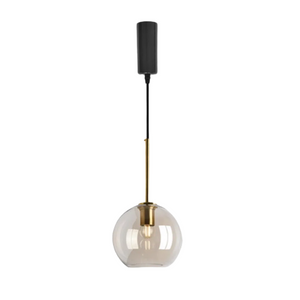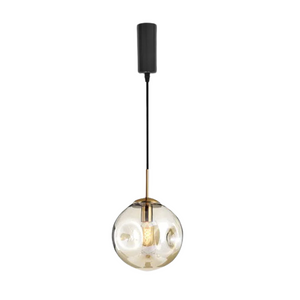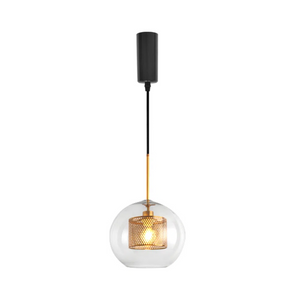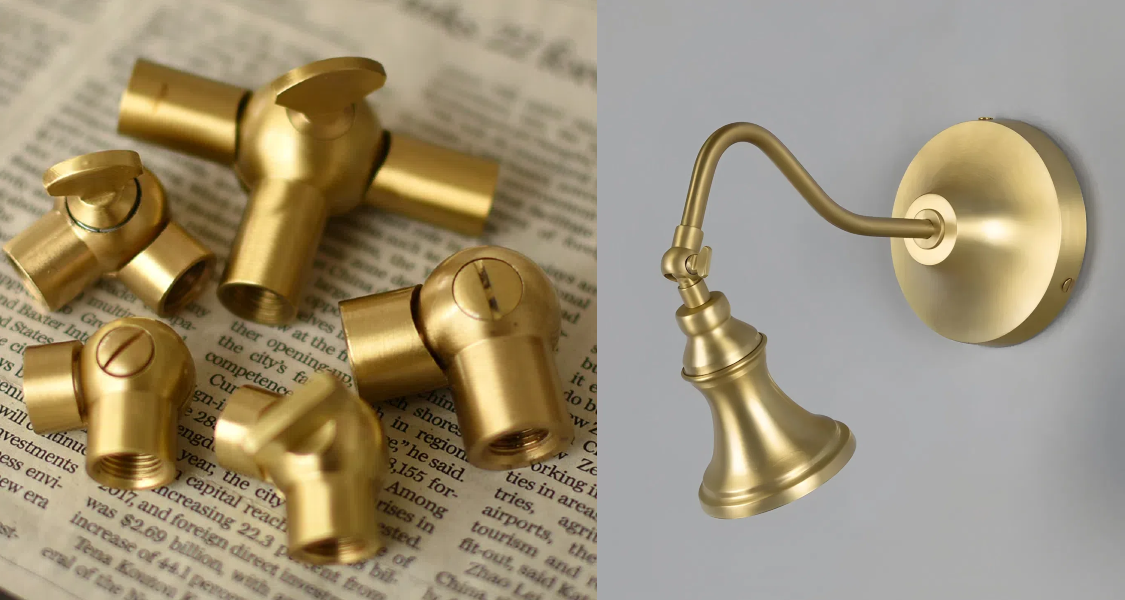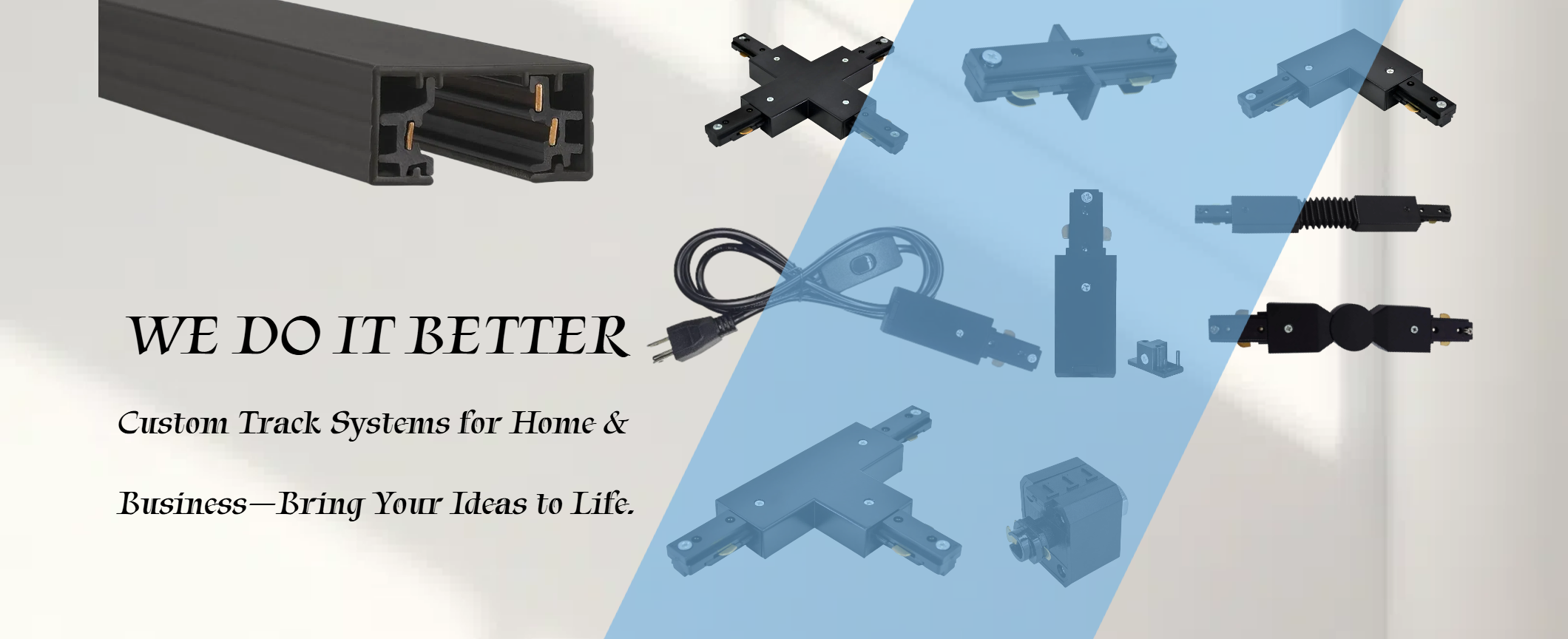Most lighting manufacturers sound perfect until you've already paid the deposit. Then the excuses start: production delays, missing certifications, or suddenly they can't handle the customization you discussed. As someone juggling multiple job sites and tight deadlines, you can't afford partners who treat contractors like an inconvenience.
Finding commercial lighting manufacturers who actually deliver UL certified lighting on schedule and answer their phones when issues arise shouldn't be this hard, but it is.
Why Custom Lighting Helps Your Business

Beyond solving installation problems, custom lighting gives you real competitive advantages. When selecting the right lighting solutions, custom-engineered lighting can help you quickly meet project demands and enhance overall design. Contractors who offer custom solutions win more work, keep clients longer, and make better margins.
Stand Out and Win More Jobs
Other contractors show up with the same catalog everyone uses. You show up with lighting designed specifically for the client's project. That's how you win bids—especially with clients who care about design and remember contractors who actually solve their problems.
Keep Clients Coming Back
When clients get custom solutions, they stick with you. A restaurant owner who loves their fixtures calls you first for their next location. Property managers want the same quality everywhere—nail one building and they'll keep hiring you for more.
Make More Money Per Job
Standard lighting has thin margins—maybe 15%. Everyone's fighting over price. Custom work gets you 25-35% margins because fewer contractors do it and clients can't shop around and compare prices. Plus, working directly with manufacturers gets you better pricing than buying retail, so you make more while giving clients something unique.
Essential Certifications and Compliance for Commercial Projects
Certifications determine whether your project passes inspection and protects you if something goes wrong. Here's what you need before purchasing.
UL Certification – The Non-Negotiable One

UL (Underwriters Laboratories) certification is required for almost every commercial project in the US. Without it, inspectors will fail your electrical inspection and you'll have to rip out and replace all the fixtures—at your own cost. Beyond passing inspection, UL certification protects you legally.
If a non-certified fixture causes a fire or injury, your insurance may refuse to cover it, and you're personally liable. No UL means no certificate of occupancy and no protection if something goes wrong.
ETL – Works Just Like UL
ETL certification from Intertek does the same safety testing as UL. Most building codes accept it as equal to UL, so either one works. Some manufacturers use ETL instead of UL—both are legitimate. Just make sure any custom changes to your fixtures don't cancel out the certification.
DLC – Required for Energy Rebates
If your client wants utility rebates (and most commercial clients do), you need DLC certification. Many utility companies won't give rebates without it, and some states now require it for commercial lighting. Miss this and your client could lose thousands in rebates—and they'll blame you for not catching it.
Energy Star – For Green Buildings and Rebates
Energy Star proves your fixtures meet EPA efficiency standards. You'll need this for LEED projects, many residential jobs, and clients chasing sustainability goals or energy rebates. It's not required everywhere like UL, but it matters when clients care about efficiency or green certifications.
California Title 24 – California Only, But Mandatory
Working in California? Your fixtures must meet Title 24 energy standards. Period. This isn't optional—fail to meet it and your project won't pass inspection. Check compliance before ordering anything for California projects.
CSA – For Canadian Projects
Canadian projects need CSA certification, not UL. They're not interchangeable—UL fixtures won't pass inspection in Canada. If you work across the border, make sure your manufacturer has CSA certification or you'll have to source different fixtures.
Wet/Damp Ratings – For Anywhere Near Water
Installing near pools, outdoors, in bathrooms, or coastal areas? You need fixtures rated for wet or damp locations. This is code, not a suggestion. Regular indoor fixtures will fail inspection in these spots. Tell your manufacturer exactly where you're installing so they spec the right environmental rating.
Seismic Standards – Earthquake Zones
California, Pacific Northwest, and other earthquake areas require special seismic safety standards for ceiling-mounted fixtures. Inspectors check that fixtures are properly braced and mounted to handle shaking. If you're working in earthquake country, verify your fixtures meet local seismic requirements.
7 Must-Have Qualities in Commercial Lighting Manufacturers

Finding the right partner determines whether your project runs smoothly or drains your profit. Here's what matters most.
1. Flexible Order Quantities
Many manufacturers require 50-500 unit minimums. This works for large projects but forces contractors doing smaller jobs to either pass on work or buy excess inventory.
Look for: No minimums or flexible policies. Order 5 fixtures or 500 based on what you actually need. Test them with a small order before committing to larger projects.
2. Real Engineering Capability
Many suppliers call themselves "custom" but only change finishes. True customization means solving your specific installation challenges.
Real custom includes:
- Modified dimensions for unusual spaces
- Custom mounting for non-standard installations
- Specific beam angles and performance specs
- Building automation integration Ask to see examples where they modified fixture designs, not just colors.
3. Firm Dates and Rush Options
Vague "6-8 week estimates" don't work with construction schedules.
Must have:
- Specific production and ship dates
- Rush capability when needed (typically +25-60% cost)
- Immediate notification if anything changes Always build 2-3 weeks buffer into your schedule.
4. Complete Installation Documentation
Quality manufacturers provide everything your electrician needs:
- Color-coded wiring diagrams
- Mounting templates with exact dimensions
- Rough-in specs before fixtures ship
- Dimmer compatibility and hardware lists Every hour your crew spends figuring out installation cuts your profit.
5. Transparent Pricing
Complete quotes include:
- Per-fixture cost
- All customization fees
- Shipping costs
- Volume discount tiers No "call for pricing." No hidden charges after you commit.
6. Fast Defect Resolution
Fixtures fail. Shipping damages products. What matters is response time.
Look for:
- Immediate replacement shipment
- 3-5 year warranty including drivers and shipping
- Ability to reorder matching fixtures years later "Sorry, we discontinued that line" destroys contractor relationships.
7. Proactive Communication
You shouldn't chase manufacturers for updates.
Quality communication:
- Dedicated rep who knows your projects
- Automatic updates at key milestones
- 24-hour response time
- Solutions-focused problem solving Unresponsive during sales means worse during production.
How to Vet Custom Lighting Manufacturers: 5 Steps

Don't choose a manufacturer solely based on their website or low costs. You may avoid costly errors and project delays by doing thorough due diligence. Here's a methodical way to assess manufacturers.
Step 1: Examine Their Portfolio
Seek out initiatives that are comparable to yours.
Look for their restaurant work if you work in eateries. Seek corporate projects if you create office buildings. Previous work demonstrates their abilities beyond their claims.
Verify if there is true customization.
Do you notice ordinary products in different colors or true custom engineering (differentiated dimensions, special mounting methods, and customized performance specs)? Request directly: "Show me examples where you modified fixture design for a contractor's specific requirements."
Check to see if they use contractors.
Do they know what "rough-in" and "punch list" mean? Does their portfolio consist of beauty pictures or installation photos? Can they offer references from contractors in addition to end-user reviews?
Step 2: Request and Test Samples
Obtain physical samples prior to placing significant orders.
Images are deceptive. Verify whether the materials (real brass vs. plated steel), mounting hardware, and finishes appear high-end or low-end.
Examine the electrical parts.
Examine the sample by opening it. Are LED drivers generic or from well-known brands like Philips or Mean Well? Is the wiring organized or crowded? Does the heat get managed properly? Your electrician can identify installation issues that you might overlook if you show them samples.
Check against the specifications.
Does the fixture deliver on its promises in terms of beam angle, color temperature, and light output? Don't place a big order with them if the samples don't meet the requirements.
Step 3: Verify Certifications
Request documentation right away.
Request test results, DLC/Energy Star certifications, and UL/ETL certifications. Expert manufacturers deliver these in a day, not after several follow-ups.
Verify whether your fixtures are indeed covered by certifications.
Is the model you're ordering covered by the certificate? Are certifications up to date? Will the certification be nullified by your modifications? Check certificate numbers online using databases from Intertek or UL.
Verify requirements relevant to a certain jurisdiction.
Title 24 is required for California projects. CSA, not UL, is required for Canadian projects. "Can you provide [certification X] for [this specific fixture]?" is a specific question. "We can usually get that" is not a suitable response.
Step 4: Test Their Communication
Track response times.
Same-day or next-business-day responses show adequate staffing. 3-5 days suggests problems. More than a week? Move on. Slow responses during sales predict worse problems during production.
Ask technical questions.
Request CRI ratings, driver manufacturers, mounting specifications, clearance requirements. Good manufacturers answer specifically or connect you with engineering. Poor ones give vague answers or dodge questions.
See how they handle challenges.
Describe a specific project problem. Do they ask clarifying questions and suggest solutions? Or do they immediately claim "we can do anything" without understanding your needs? Red flag if they seem annoyed by questions or don't understand contractor terminology.
Step 5: Compare Detailed Quotes
Get quotes from at least 3 manufacturers with identical specs.
Each quote should include: per-unit cost, customization fees, shipping to your location, payment terms, firm lead times, and warranty details.
Compare beyond price.
The cheapest option often costs more when you factor in delays, defects, and communication problems. Consider warranty coverage, reputation, communication quality during quoting, and certification completeness.
Understand customization costs.
One manufacturer might charge $50 per fixture for custom powder coating. Another charges a $500 setup fee then standard pricing. Which is better depends on your order size. Get specifics on per-fixture vs. one-time engineering fees.
What You'll Pay, When You'll Get It, and How Payment Works
Pricing confusion kills deals. Contractors can't bid projects accurately without understanding what drives costs and how long production actually takes.
What Affects Pricing
Design Complexity
Simple customization costs less. Changing a finish or adjusting dimensions on existing designs adds 5-30%. Complex engineering—new designs, unusual mounting solutions, control system integration—adds 30-100%+ to base pricing. Be specific when requesting quotes: "brushed nickel wall sconces" costs very differently than "custom-sized wall sconces with integrated dimming for curved walls."
Materials and Finishes
Material choice dramatically impacts cost:
- Finishes: Standard powder coat (baseline) → Metallic powder coat (+15-25%) → Brushed/polished metals (+30-50%) → Premium finishes like antique brass (+40-60%)
- Materials: Aluminum (standard) → Steel (slightly less) → Brass (2-3x aluminum) → Stainless steel (+50-80%) Glass also varies. Clear is cheapest. Frosted or colored adds cost. Hand-blown glass can triple pricing.
Order Quantity
Volume significantly affects per-unit pricing:
- 1-10 units: Full price
- 10-50 units: 10-20% discount
- 50-200 units: 20-35% discount
- 200+ units: 30-40% discount Setup costs (engineering, tooling, custom finishes) get spread across all units. Ten fixtures bear the full cost; 100 fixtures spread it much thinner.
Lead Times and Timelines
Standard Production: 6-10 Weeks
Typical breakdown:
- Week 1: Order processing, engineering review, materials procurement
- Weeks 2-4: Fabrication, finishing, assembly
- Week 5: Quality control and testing
- Week 6: Packaging
- Weeks 7-8: Shipping time
What extends timelines:
- Complex engineering (+2-4 weeks)
- Specialty materials not in stock (+1-3 weeks)
- Custom powder coat colors (+1-2 weeks)
- High production periods (+1-2 weeks)
Rush Options
Projects accelerate. Most manufacturers offer rush production for premium pricing:
- 4-week turnaround: +25% cost
- 3-week turnaround: +40% cost
- 2-week turnaround: +60% cost Rush works for simple customization with standard materials and smaller quantities (under 25 units). Complex engineering or specialty materials can't be rushed regardless of price.
Build in Buffer Time
Smart contractor math: If manufacturer says 8 weeks, plan for 10 weeks. Shipping delays, quality control issues, and specification changes happen. Tell your electrician 10 weeks even if promised 8. If fixtures arrive early, everyone's happy. If they arrive on time, you still have buffer before impacting other trades.
Payment Structures
Typical Deposits
Most manufacturers require 30-50% deposits on custom orders because fixtures are made specifically for your project and can't be resold if you cancel.
Standard deposit structures:
- Under $5,000: 50% deposit
- $5,000-$20,000: 40% deposit
- Over $20,000: 30-35% deposit
- Over $100,000: Negotiable milestone payments
Milestone Payments for Large Orders
For substantial projects, payments spread across milestones reduce risk:
Example for $50,000 order:
- 30% at order placement: $15,000
- 40% when production completes: $20,000
- 30% upon delivery: $15,000 This protects both parties—you're not fronting everything before seeing progress, and the manufacturer receives payment as they incur costs.
Payment Terms
Standard terms:
- Deposit due at order placement (production starts after receipt)
- Balance due before shipping or upon delivery Established contractors often get Net 30 terms on the balance after proving reliability through initial projects.
Accepted payment methods:
- Wire transfer (preferred for large orders)
- Credit card (up to $25,000, typically 3% fee)
- ACH transfer
- Company check (requires clearance first)
Cancellation Policy
- Before production starts: Full refund minus 10% admin fee
- After production starts: Deposit retained to cover incurred costs
- After production completes: No refunds, but flexible on delivery schedules Communicate problems early for best outcomes. Last-minute changes are difficult to accommodate.
Questions Every Contractor Should Ask Before Committing
Ask these questions before placing your first order. The answers reveal whether a manufacturer understands contractor needs and can actually deliver on their promises.
- Do you have UL certified lighting in your product line?
- What are your minimum order requirements for custom lighting solutions?
- What's your typical lead time and rush order policy?
- Can you provide references from other contractors?
- What warranty do you offer and what does it cover?
- Who will be my main point of contact during production?
- What happens if there's a defect after installation?
- Can you accommodate specification changes mid-production?
- Do you offer installation support or technical documentation?
- What's your process for handling project delays on our end?
Pre-Order Checklist: Before Committing to a Manufacturer
✅Verified all necessary certifications (UL, etc.)
Don't just ask if they have them. Request copies of actual certification documents and verify them online through UL or ETL databases.
✅Received and approved physical samples
Photos lie. Hold the actual fixture, test the finish, check the weight and construction quality. Show it to your electrician.
✅Obtained detailed written quote with all costs
Every fee should be listed: fixtures, customization, shipping, taxes. No "call for pricing" or "additional costs may apply."
✅Confirmed lead time works with project schedule
Match their delivery date against your construction schedule with buffer time built in. Confirm it's a firm date, not an estimate.
✅Checked references from other contractors
Actually call them. Ask about communication, quality, on-time delivery, and how they handled problems.
✅Reviewed and understand warranty terms
Know exactly what's covered, for how long, who pays shipping on defects, and what voids the warranty.
✅Established clear communication protocol
Who's your main contact? How often will you receive updates? What's the response time expectation for questions?
✅Signed written agreement protecting both parties
Everything discussed should be in writing: specifications, costs, timelines, payment terms, and what happens if things go wrong.
✅Confirmed payment schedule and terms
Deposit amount, balance due date, payment methods accepted, and any penalties or discounts clearly stated.
✅Documented all custom specifications in writing
Finishes, dimensions, electrical specs, mounting requirements—everything custom should be documented with drawings or detailed descriptions both parties signed off on.
Frequently Asked Questions About Custom Lighting
Q1: What is the typical minimum order quantity for custom lighting?
It depends on the manufacturer. Many require 50-100 units minimum, but some let you order as few as 5 fixtures. For smaller projects, find manufacturers with no minimums or flexible policies. Some waive minimums for repeat customers or add a 10-15% small-order fee. Always ask about minimum order requirements before getting quotes.
Q2: How long does custom lighting manufacturing take?
Standard timeline: 6-12 weeks total
- Simple changes (finishes): 4-6 weeks
- Complex engineering: 10-14 weeks Smart planning: Add 2-3 weeks buffer to any timeline they give you. Ask for firm delivery dates, not estimates. Confirm if the timeline includes shipping or just production.
Q3: Is UL certification required for all commercial projects?
Yes, that is necessary. UL or ETL certification is required for commercial projects in the United States. Without it:
- Inspectors fail your electrical inspection
- You'll have to remove and replace all fixtures at your cost
- Your insurance may not cover liability claims
- You can't get certificate of occupancy Don't skip certifications to save money—the risks are too high.
Q4: Can I get samples first?
Yes, and you should always ask for them. Good manufacturers offer samples for free or for a fee between $50 and $200. Check the following with samples: :
- Material quality and finishes
- Construction quality
- Whether specs match reality Before placing your order, show your electrician samples. A warning sign is when a manufacturer denies samples or charges exorbitant prices.
Q5: What's the difference between custom and semi-custom lighting?
Semi-custom: Choose from existing options (finishes, sizes, specs in their catalog)
- Cost: +10-25%
- Timeline: 4-8 weeks
- Best for most contractor projects True custom: New designs or major modifications engineered for your needs
- Cost: +30-60%+
- Timeline: 8-12+ weeks
- For unique requirements
Q6: How much more expensive is custom lighting vs. standard products?
Cost premiums over standard fixtures:
- Simple finish changes: +10-20%
- Modified dimensions: +20-35%
- Complex engineering: +40-60%+ Custom track lighting and wall sconces typically run +15-25%. Larger orders reduce the per-unit premium.
Q7: What if fixtures arrive damaged?
Good manufacturers ship replacements immediately. Here's what to do:
- Document damage with photos
- Notify manufacturer within 24-48 hours
- Request overnight replacement for urgent situations
Before ordering, check warranty terms. Look for:
- 3-5 year coverage
- Includes shipping costs for replacements
- Fast resolution process
Q8: Can custom lighting be expedited for tight deadlines?
Yes, but it costs more:
- 4-week rush: +25% cost
- 2-week rush: +50-60% cost Rush orders work best for simple customizations, smaller quantities (under 25-50 units), and standard materials. Complex engineering or specialty materials can't be rushed regardless of price. Ask about rush capabilities upfront—not all manufacturers can accommodate expedited timelines.
Get Custom Lighting Right the First Time
Select the appropriate manufacturer to steer clear of costly errors. Seek partners who can:
- Deliver UL certified lighting on schedule
- Respond quickly when issues arise
- Understand contractor timelines and needs The correct manufacturer simplifies your project, regardless of whether you require flexible ordering with no minimums or custom track lighting for retail. Before committing, talk about your timeline and request samples.
